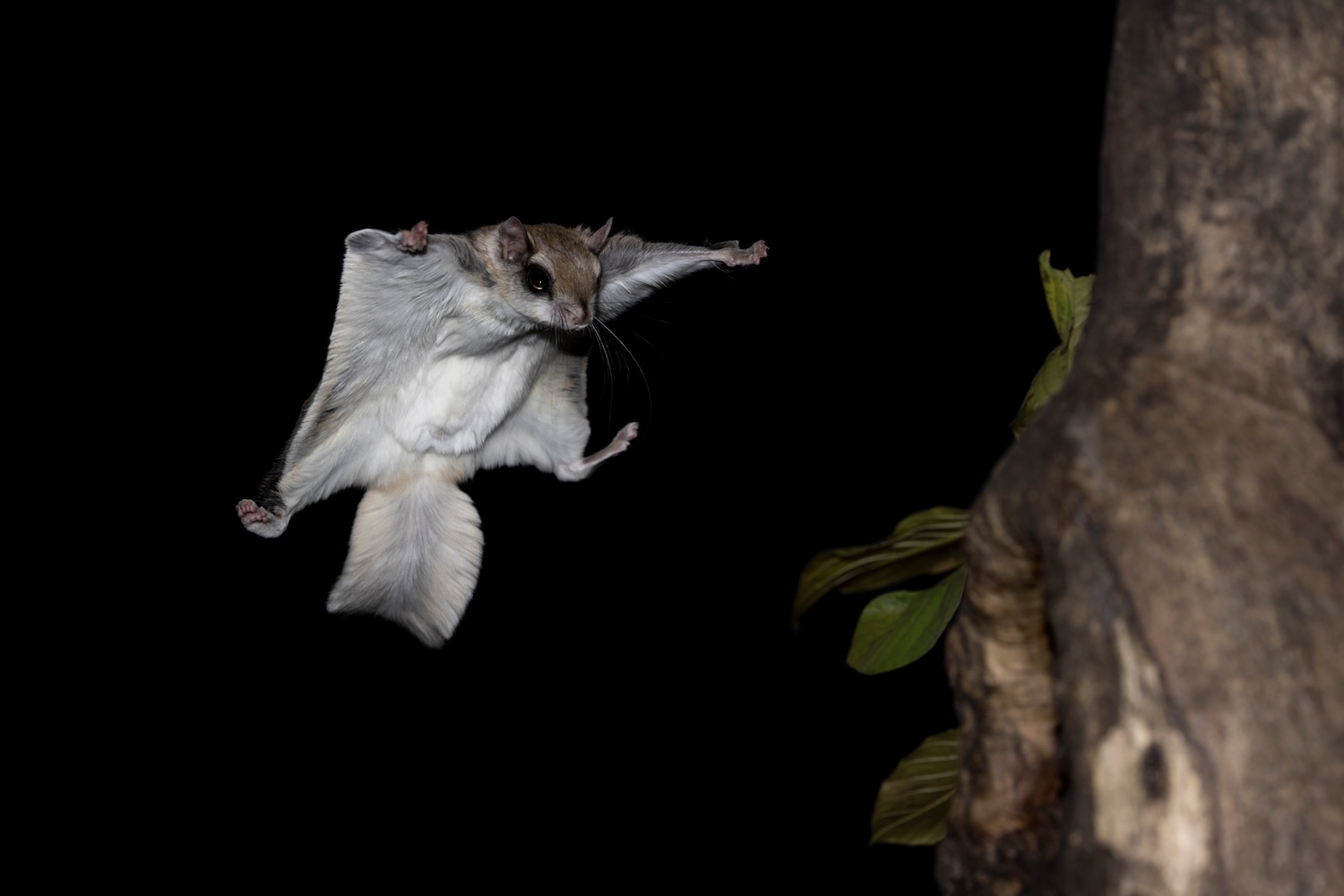Flying squirrels? More like gliding squirrels

It's a bird, it's a plane, it's a ... flying squirrel? Yes and no. Flying squirrels do exist, but these squirrels would more appropriately be called gliding squirrels because while they can get airborne, they do it by gliding, not flying.
The southern flying squirrel is one of four tree squirrel species that reside in Illinois, along with eastern gray squirrels, fox squirrels and red squirrels, according to Wildlife Illinois. Like eastern gray squirrels and fox squirrels, they live all across the state. However, flying squirrels are more common in the southern half of the state.
Southern flying squirrels have been documented at several Will County forest preserves, including Braidwood Dunes and Savanna Nature Preserve, Hickory Creek Preserve, Kankakee Sands Preserve, Keepataw Preserve and Thorn Creek Woods Preserve, said Forest Preserve wildlife ecologist Becky Blankenship. Within the preserves, they are typically seen in spots with mature forests.
Flying squirrels aren't as familiar to people as other squirrel species for one very good reason: They are nocturnal. Blankenship said she believes they may be more prevalent in the preserves than what has been documented because their nocturnal behavior makes them difficult to detect. Even in places where they are common, they are seldom seen because they are active only at night. Once they sun sets, they wake. That's when they go gliding — not flying — through the air.
They are able to glide thanks to a flap of skin called a patagium. They have a patagium on each side of their body, stretching from their wrists to their ankles. When they leap into the air, they spread out their arms and legs, extending the patagia (the plural for patagium) as they do, according to the National Park Service. The patagia then catch the air like a kite as they soar.
Flying squirrels can glide several hundred feet at a time, reaching speeds of 20 mph to 30 mph. And depending on how far they are going, they can even sometimes glide in loops and travel in reverse! Once airborne, they steer themselves using their legs and tails. When they come in for a landing, they angle their bellies toward the chosen tree and then all four feet hit the surface at once.
Gliding doesn't just make it easier to get from tree to tree, it also helps them stay safe from predators on the ground, the park service reports. They do occasionally spend time on the ground while foraging for food, making them more vulnerable to predators like coyotes, bobcats, weasels and even pet cats. More often, though, they are preyed on from animals above, namely owls and other raptors. When they land on a tree, they will often immediately move over to the other side in case an owl is lurking nearby.
Some of flying squirrels' physical features are adaptations that allow them to thrive at night. To start, their eyes have large pupils, appearing almost entirely black, to maximize how well they can see with only moonlight and starlight, the National Park Service reports. They also have the longest whiskers of any squirrel species to help them navigate at night without bumping or crashing into trees and other objects.
They are the smallest of the tree squirrels that live in Illinois, about the size of a chipmunk, according to Wildlife Illinois. Their fur is mostly brownish-gray, but their bellies are white.
Southern flying squirrels have a range that extends far beyond the South. Their range includes most of the eastern United States as well as pockets of southern Canada, Mexico and Central America, PBS reports. North America is home to a second flying squirrel species as well. The northern flying squirrel is found predominantly in Canada and far northern states, including nearby Michigan and Wisconsin, as well as in the Appalachian mountains.
The diet of these squirrels will come as no surprise to anyone who is familiar with our more well-known gray squirrels and fox squirrels. Southern flying squirrels eat a lot of nuts and seeds, as well as fruit and fungi, the National Wildlife Federation reports. They are classified as omnivores because they also eat insects as well as birds, eggs and even carrion. In fact, they are considered to be one of the most carnivorous squirrel species because of how much animal matter they eat.
Like other squirrels, flying squirrels contribute to reforestation efforts because they bury their nuts to save them for times when food is scarce, but they don't always return for them, the Missouri Department of Conservation reports. They also contribute to tree health by eating insects that burrow into wood and also eating buds, which stimulates growth.
Within the mature forests where they live, large trees or tree snags are the preferred spots for their nests, which they usually build in hollow cavities. Among their favorite nesting spots are abandoned woodpecker nests. As old-growth woodlands have become less plentiful, flying squirrels have sometimes begun to nest in homes and other man-made structures as well, the park service reports.
Southern flying squirrels typically breed twice a year, once in late winter or early spring and again in late spring or summer. Babies are born about 40 days after mating. Spring litters typically have two or three babies, while summer litters will have four or five, Animal Diversity Web reports. The babies are able to care for themselves after about eight weeks, but the offspring sometimes stay with their mothers until she has another litter of babies.
